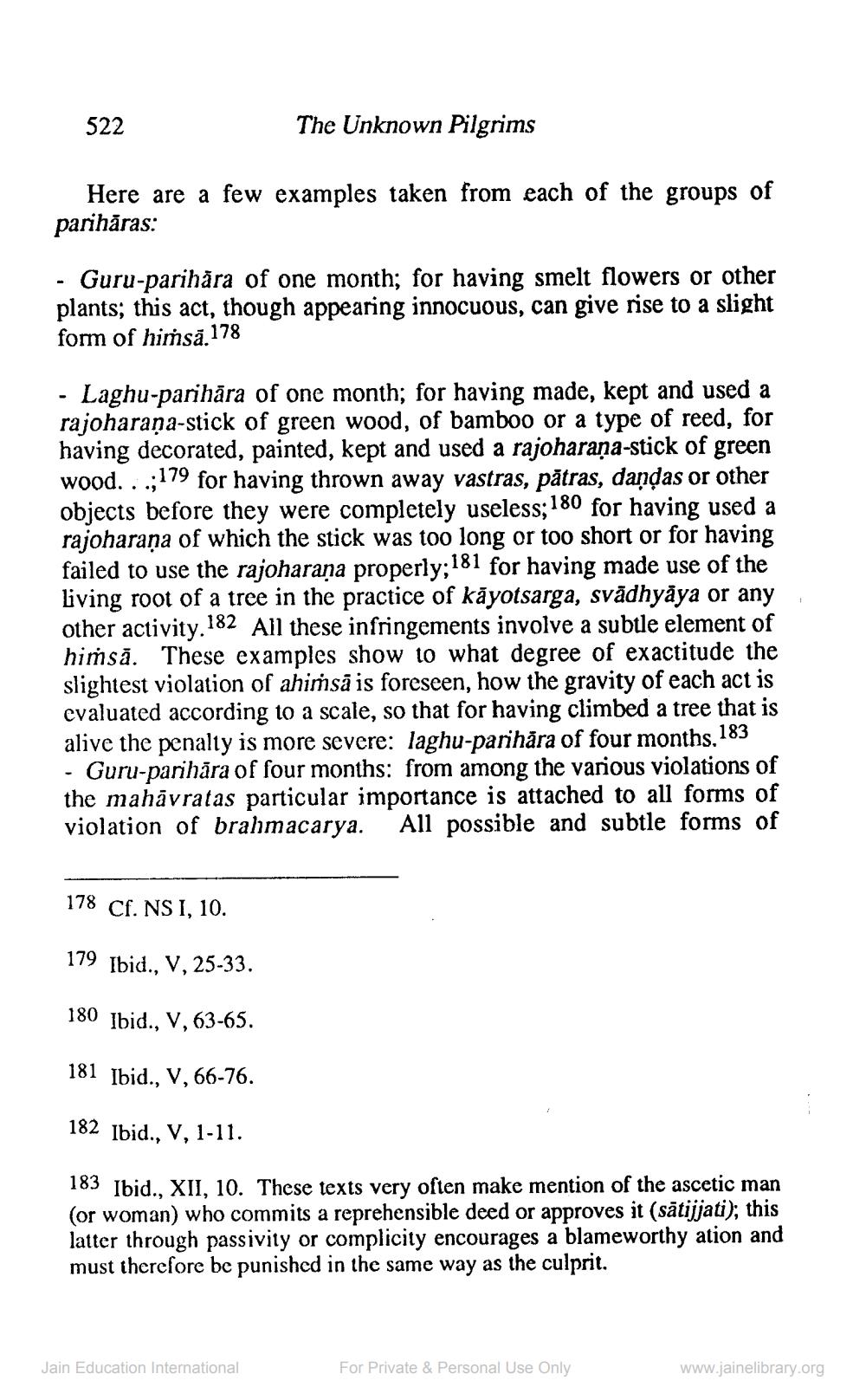________________
522
The Unknown Pilgrims
Here are a few examples taken from each of the groups of parihāras:
- Guru-parihāra of one month; for having smelt flowers or other plants; this act, though appearing innocuous, can give rise to a slight form of hiṁsā.178
- Laghu-parihāra of one month; for having made, kept and used a rajoharana-stick of green wood, of bamboo or a type of reed, for having decorated, painted, kept and used a rajoharana-stick of green wood. ..;179 for having thrown away vastras, pătras, dandas or other objects before they were completely useless; 180 for having used a rajoharana of which the stick was too long or too short or for having failed to use the rajoharaṇa properly;181 for having made use of the living root of a tree in the practice of kāyotsarga, svādhyāya or any other activity.182 All these infringements involve a subtle element of hiṁsā. These examples show to what degree of exactitude the slightest violation of ahiṁsā is foreseen, how the gravity of each act is evaluated according to a scale, so that for having climbed a tree that is alive the penalty is more severe: laghu-parihāra of four months, 183 - Guru-parhāra of four months: from among the various violations of the mahāvratas particular importance is attached to all forms of violation of brahmacarya. All possible and subtle forms of
178 Cf. NS I, 10.
179 Ibid., V, 25-33.
180 lbid., V, 63-65.
181 Ibid., V, 66-76.
182 Ibid., V, 1-11.
183 Ibid., XII, 10. These texts very often make mention of the ascetic man (or woman) who commits a reprehensible deed or approves it (sātijjati); this latter through passivity or complicity encourages a blameworthy ation and must therefore be punished in the same way as the culprit.
Jain Education International
For Private & Personal Use Only
www.jainelibrary.org




